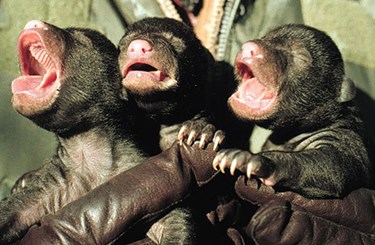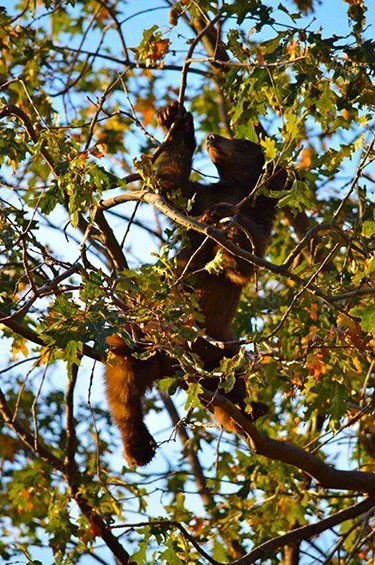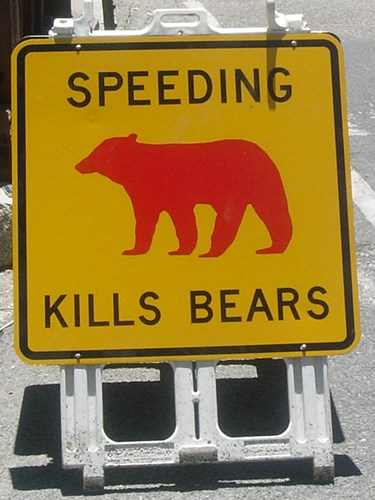

Mark Betram/U.S. Fish and Wildlife

American black bears found in Yosemite National Park have long been of intense interest to park visitors and managers. Seeing one of the approximately 300 to 500 black bears in Yosemite can evoke excitement, awe, and fear. If visitors spot a bear while in the park, it is a black bear-not a brown or grizzly bear. The last known grizzly bear was shot outside the Yosemite region in the early 1920s; the species no longer exists in California despite its presence on the California state flag. Black bears fascinate wildlife enthusiasts due to their unique biology and behaviors. Most of Yosemite's black bears, despite their name, are not black, but are brown in color. Truly black-colored black bears are rare in the west. Black bears vary greatly in size--the largest black bear captured in Yosemite weighed 690 pounds, which is much larger than the typical male found here that usually weighs around 250 pounds. Bears weigh the most in fall when gorging on acorns and other seasonal foods. This enables them to gain fat and survive winter—consuming up to 20,000 calories a day (equal to a human eating 40 Big Mac sandwiches in a day). Bears hibernate in hollow trees or logs, under the root mass of a tree, or in caves formed by a jumble of large rocks. While hibernating, bears enter a state of reduced body temperature, pulse rate, and respiration that conserves energy, and do not defecate nor urinate, but can metabolically extract energy from body wastes. Their "sleep" is not a deep one. Black bears often leave the den periodically. After emerging from winter dens, bears feed largely on meadow grasses, which are low in nutrition but sustain them until berries of various plant species ripen and other foods become available that provide higher calories. Bears also eat ants, termites, and insect larvae ripped out of logs or dug from the ground. The oldest bear known in Yosemite was a 32-year-old female first captured in the Tuolumne Meadows area in the 1980s. Visitors who encounter a bear should keep their distance for safety and respect for themselves and the animal. If visitors see a black bear in undeveloped areas, they should remain at least 50 yards from it. If they encounter a bear in developed areas, they should stand their ground and scare the bear away by raising their arms and making very loud noises. Black bears may show dominance by bluff charging, especially when guarding food or cubs. Attacks are rare, and no one has been killed or seriously injured by a black bear in Yosemite.
Visit our keyboard shortcuts docs for details
Hundreds of black bears make their home in Yosemite and seeing a wild bear is often the highlight of a trip to the park. Bears often remind us of ourselves, and the complex relationship between bears and humans has changed over time as we have strived to keep bears wild. 
Do Your PartPark managers attempt to preserve this species that can be negatively affected by humans. First, visitors should drive the speed limit, reminded by signage placed where a bear has been hit by a vehicle. Next, visitors should follow food storage regulations. Bear management attitudes have changed since the early days of the park's history when little was done to keep bears from becoming conditioned to human food. Decades ago, the National Park Service maintained several bear feeding areas in the park where bears were fed for the entertainment of park visitors. When visiting Yosemite, visitors should expect black bears to attempt amazing acts to obtain human food. If food has been left in a car, bears will break vehicle windows, bend car frames, and pop open camper shells. To get into a trunk, they will enter the passenger area and claw through the back seat. Learn about Yosemite’s bear management and food storage regulations for campgrounds, trailheads, lodging and wilderness. More Information
References (more on Bear Management page):
|
Last updated: November 19, 2024
